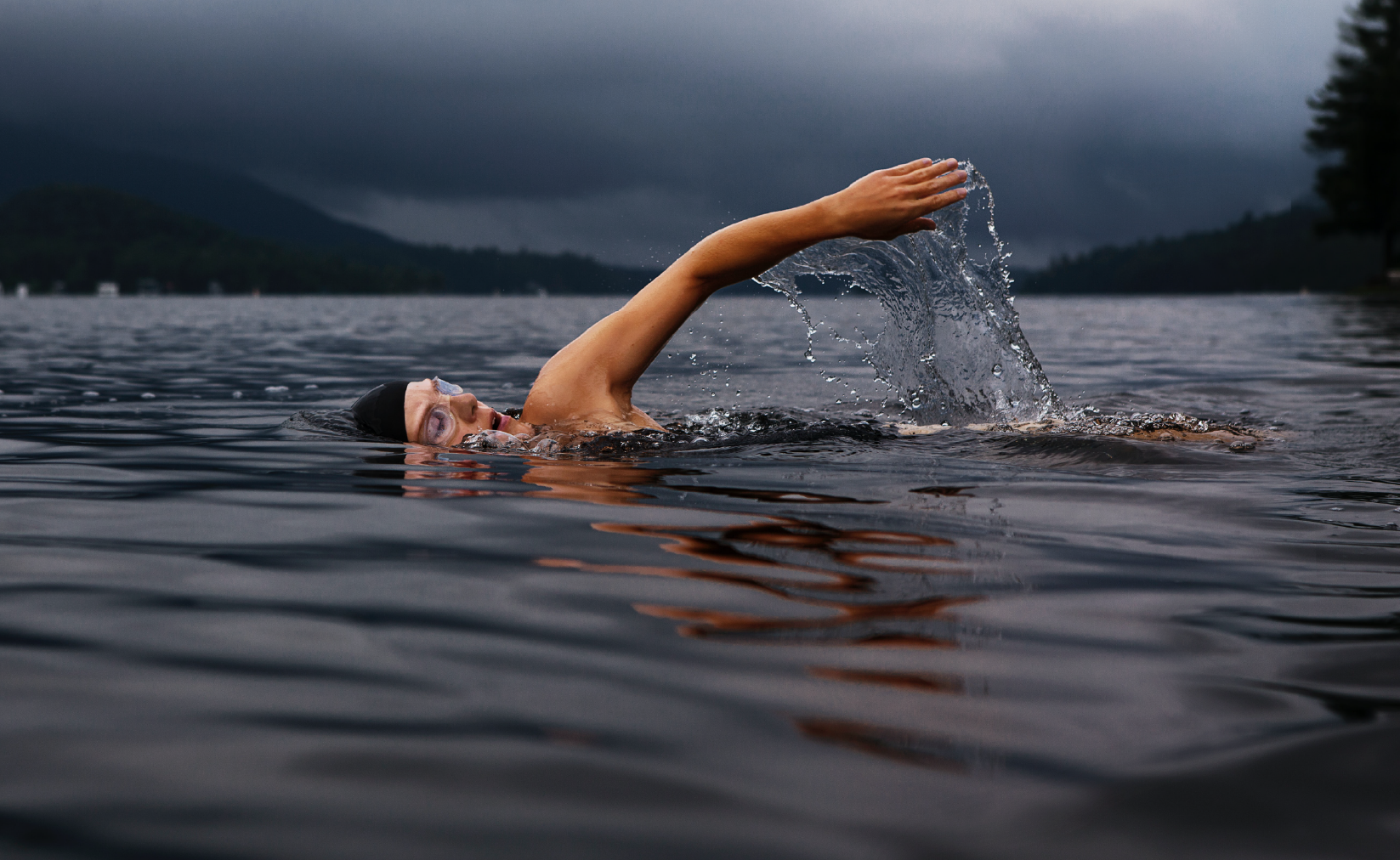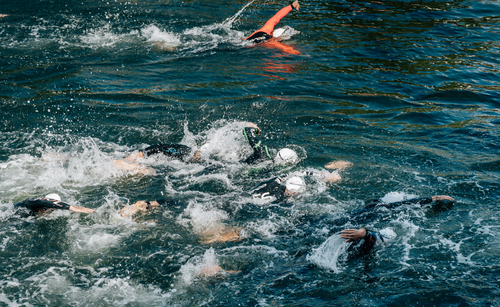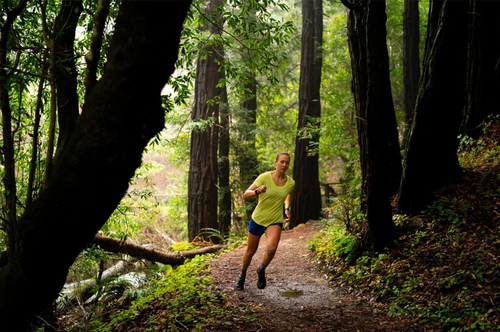How to get the most out of your triathlon swim

No matter where you are in your triathlon journey, standing on the shore by the start of your next race and looking at the buoys that seem to be miles away, the swim can be daunting. You've put your time in the pool, and hopefully few open water practices, before you're toeing the line. Here are three hints of how you can get the most out of the start of your race to set you up for your best race.
1. Sight appropriately. Nobody wants to swim more than they have to. How many times have you uploaded your Garmin to find you’ve swum 20% further than the course due to zig-zag lines. How many times have you been cut-off or run into by a rogue swimmer who can’t stay on the course. By learning how to most effectively lift your head and see where you're going. The lower you can keep your head to the water, the less energy you will have to expend with every look. In addition, you need to find the appropriate balance between sighting enough to swim straight, but not so many that you waste energy looking. When you start, you may have to look every six strokes. The better you get, you can practice extending that to nine then twelve then twenty then forty and so on. Then, instead of looking and aiming to the closest buoy to you, look two, or three, or all the way to the finish or turn. Most races do their best to line buoys up straight, but currents or winds or human error can often cause them to drift. Don't let these obstacles keep you from having your best swim. Abide by all course rules and keep to the correct path, but if possible, take the shortest path.
2. Kick. Appropriate, hydrodynamic body position is essential for an optimal swim. Simple laws of physics dictate that when you lift your head up, your hips will sink. On top of that, muscle doesn’t float. Do you want to drag 50% of your body as dead-weight through the water just waiting to use it later? By countering with some increased leg action, you can boost those hips toward the surface and maintain your body position and utilize those great muscles you’ve developed with biking and running. But kicking every six - or forty- strokes is like only pumping your arms with every tenth stride while running. Having an efficient kick will help propel you forward and allow you to have a faster stroke turnover and gain distance per stroke and swim further faster. Don't "save your legs" for the rest of the race; your swim kick should originate high in your core and still give you enough energy in your hip flexors, quads, and so on for you to rock your bike and run.
3. Finish your stroke. Don't get so caught up in your catch that you forget the most powerful part of your pull. Think of when you get yourself out of the deep end of the pool; your hands will likely be above your head. Do you pull your chest to the deck and stop? Or do you pull all the way until your legs are completely extended and your hips are at the deck? Don’t forget to use those triceps when you tire. Treat your swim as if you're pulling yourself toward the end with every stroke.
Written by
Kristen Hamilton

No matter where you are in your triathlon journey, standing on the shore by the start of your next race and looking at the buoys that seem to be miles away, the swim can be daunting. You've put your time in the pool, and hopefully few open water practices, before you're toeing the line. Here are three hints of how you can get the most out of the start of your race to set you up for your best race.
1. Sight appropriately. Nobody wants to swim more than they have to. How many times have you uploaded your Garmin to find you’ve swum 20% further than the course due to zig-zag lines. How many times have you been cut-off or run into by a rogue swimmer who can’t stay on the course. By learning how to most effectively lift your head and see where you're going. The lower you can keep your head to the water, the less energy you will have to expend with every look. In addition, you need to find the appropriate balance between sighting enough to swim straight, but not so many that you waste energy looking. When you start, you may have to look every six strokes. The better you get, you can practice extending that to nine then twelve then twenty then forty and so on. Then, instead of looking and aiming to the closest buoy to you, look two, or three, or all the way to the finish or turn. Most races do their best to line buoys up straight, but currents or winds or human error can often cause them to drift. Don't let these obstacles keep you from having your best swim. Abide by all course rules and keep to the correct path, but if possible, take the shortest path.
2. Kick. Appropriate, hydrodynamic body position is essential for an optimal swim. Simple laws of physics dictate that when you lift your head up, your hips will sink. On top of that, muscle doesn’t float. Do you want to drag 50% of your body as dead-weight through the water just waiting to use it later? By countering with some increased leg action, you can boost those hips toward the surface and maintain your body position and utilize those great muscles you’ve developed with biking and running. But kicking every six - or forty- strokes is like only pumping your arms with every tenth stride while running. Having an efficient kick will help propel you forward and allow you to have a faster stroke turnover and gain distance per stroke and swim further faster. Don't "save your legs" for the rest of the race; your swim kick should originate high in your core and still give you enough energy in your hip flexors, quads, and so on for you to rock your bike and run.
3. Finish your stroke. Don't get so caught up in your catch that you forget the most powerful part of your pull. Think of when you get yourself out of the deep end of the pool; your hands will likely be above your head. Do you pull your chest to the deck and stop? Or do you pull all the way until your legs are completely extended and your hips are at the deck? Don’t forget to use those triceps when you tire. Treat your swim as if you're pulling yourself toward the end with every stroke.
Written by
Kristen Hamilton
SEE WHAT CUSTOM APPAREL LOOKS LIKE

GEAR UP
MORE FROM THE BLOG

How to Plan Your 2019 Season to Put Your Hard Training to Good Use
Team Innerforce's 2019 coach, Rick Lapinski, explains how to effectively plan your race schedule in order to get the most...

Breakfasts to fuel your bike session
To bike well, one has to eat well. Early morning sessions are always tough, but focussing on a good...

Innerforce Signs Kayla Kobelin: "I'm excited to to push myself even further"
It is with great pride that we, at Innerforce, welcome Kayla Kobelin to the Innerforce family as our first sponsored...

Triathlete Nutrition: What to Eat to Maximize Performance
Nutrition is crucial in any sport but for a multi-faceted discipline like triathlon, which tests your swimming, cycling and running...



